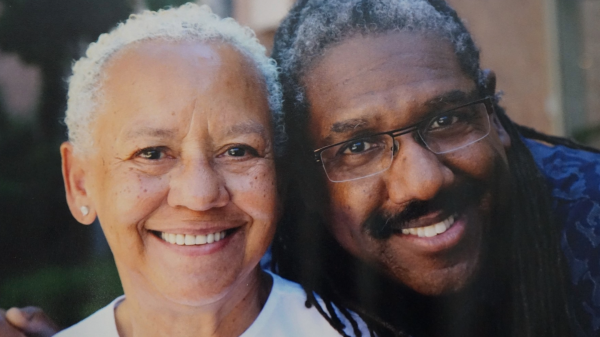ASU international ceramics graduate turns dream into reality

Miru Kim stands in front of a ceramics installation.
Editor's note: This story is part of a series of profiles of notable fall 2021 graduates.
When Miru Kim made the decision to leave her home country of the Republic of Korea to study ceramics at Arizona State University, she didn’t realize how challenging the language barrier would be.
“During the first year, I couldn't ask any questions I had,” she said. “There were things I wanted to say, but I couldn't talk deeply. So, I worked alone and that has become part of my work. It was difficult to make friends, but some of them came to me without prejudice. I think that enduring loneliness made me grow even more.”
She said during the difficult times, she considered leaving Arizona.
“I really wanted to go back to Korea,” she said, “however, I could not overturn that choice because it was my decision to study in the United States.”
She chose ASU because of the award-winning ceramics faculty — Susan Beiner, Kurt Weiser and Sam Chung. She wanted to learn from and work with them.
“So, I decided to stay and complete the course, and I persevered to the end even though it was difficult,” she said.
In July, she was one of 11 students from around the world to be awarded the prestigious International Sculpture Center's Outstanding Student Achievement in Contemporary Sculpture Award for 2021.
She also won an MFA thesis award for her thesis exhibition, "Touching the Present.” "Touching the Present" was a body of work that expressed her emotions with clay and articulated the relationship between herself and the outside world.
This December, she will graduate with her MFA in ceramics from the School of Art in ASU’s Herberger Institute for Design and the Arts.
After graduation she said she plans to apply for a residency program and to travel to other regions, experience their culture, and collaborate with local artists and local lands.
Question: What was your “aha” moment when you realized you wanted to study ceramics?
Answer: When I went to the Korea National Museum there were ancient celadon and porcelain. I thought that's incredibly beautiful, and it inspired me to think that I wanted to make something like that. I was a science major when I was in undergrad. Then I did a double major in ceramics.
Q: What’s something you learned while at ASU — in the classroom or otherwise — that surprised you or changed your perspective?
A: In Korea's academic system, professors are powerful. It is very difficult not to follow the professor's opinion. You can have a discussion, but it's not an equal discussion. (At ASU) professors and students are not in a vertical relationship and can communicate on an equal footing. This is a big cultural difference for me, growing up in Korea. In that respect, being able to freely discuss and learn from them was a big challenge that changed me.
Q: Which professor taught you the most important lesson while at ASU and what was it?
A: Susan Beiner taught me directly and realistically how work can be realized, not just an idea. She is honest and shows me a lens of her life. How to become a real and good artist. I learned a lot from her, and she is my role model and mentor.
Q: What’s the best piece of advice you’d give to those still in school?
A: If there is something you want or want to study, actively seek out suitable professors or researchers, get in touch with them, and work with them. The experience can only be smoothly achieved while at ASU in the academic period. If you hesitate, it will take a long time for your idea to come true.
Q: What was your favorite spot on campus, whether for studying, meeting friends, or just thinking about life?
A: The music building. There is a small pond, and you can hear the music students practicing. It inspires me.
Q: If someone gave you $40 million to solve one problem on our planet, what would you tackle?
A: I'd like to use that money to develop and research fishnets that are environmentally friendly. I want the net to be an eco-friendly material, not plastic, and will be designed so that large fish and whales can easily escape without creating microplastics. I want to use that money to save the ocean.
More Arts, humanities and education

School of Social Transformation faculty member assumes new title with NSF
School of Social Transformation faculty member and Founding Executive Director of the Center for Gender Equity in Science…

ASU's Neal Lester reflects on life, death of poet Nikki Giovanni
When Neal Lester heard on Monday that poet and activist Nikki Giovanni had died, the news hit hard.Lester, the founding director…

Learning by stepping outside
By Adriana MaestasAmid a world increasingly captivated by all things digital, more than 200 Arizona teachers have crafted…